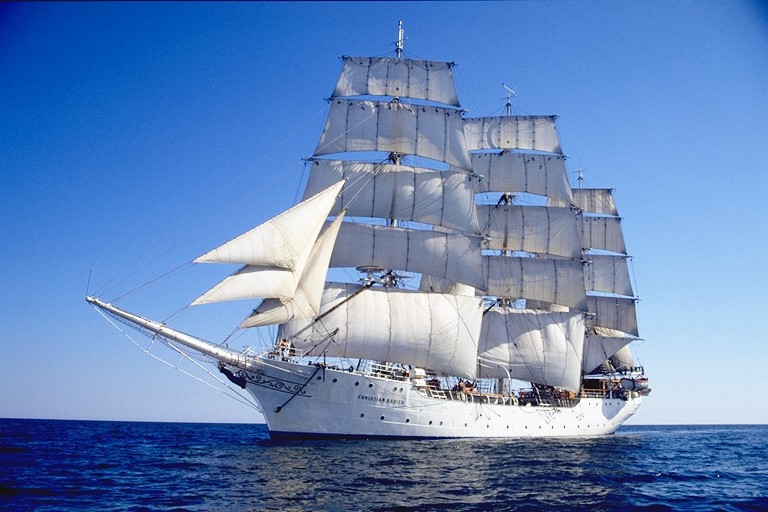Zuhaf Gambotu
-
1896 yılında ‘Germania’ AG, Kiel firması tarafından tasarlanıp Osmanlı
Donanmasında göreve başladı. Ocak 1915 ayı itibariyle Çanakkale Boğazı
civarında k...
9 years ago
all Bowsprit Kayıtsız III'e adanmıştır.
 The vessel is a full rigged three masted steel hull, callsign is LJLM, its homeport is Oslo, and the IMO number is 5071729. The class society is Det Norske Veritas, DNV, and its built to +1A1, E0.
The vessel is a full rigged three masted steel hull, callsign is LJLM, its homeport is Oslo, and the IMO number is 5071729. The class society is Det Norske Veritas, DNV, and its built to +1A1, E0.

 All rights reserved)
All rights reserved) Hercules Linton, designer of the Cutty Sark, was born in Inverbervie in 1837 .
Hercules Linton, designer of the Cutty Sark, was born in Inverbervie in 1837 . A Royal Barge (1865), BOSCH Telecom Inside Guide to Bangkok (1995), purchased & donated by Rong Dong, digitally mastered by user:kosigrim
A Royal Barge (1865), BOSCH Telecom Inside Guide to Bangkok (1995), purchased & donated by Rong Dong, digitally mastered by user:kosigrim craftsmanship and traditional Thai art. The Royal Barge Procession takes place rarely, typically coinciding with only the most significant cultural and religious events. During the reign of King Bhumibol Adulyadej spanning over 60 years the Procession has only occurred 16 times.
craftsmanship and traditional Thai art. The Royal Barge Procession takes place rarely, typically coinciding with only the most significant cultural and religious events. During the reign of King Bhumibol Adulyadej spanning over 60 years the Procession has only occurred 16 times. Thailand's Royal Barge Procession most likely began during the Ayutthaya period, in the 14th century. Western visitors witnessed and wrote about the "immense procession with 200 boats" upon their arrival in Thailand in the 18th century. During the processions, the oarsmen were kept in rhythm by the beating of drums, with accompanying music. This traditional boat song was written by Prince Dhamma Dibes of the late Ayutthaya period.
Thailand's Royal Barge Procession most likely began during the Ayutthaya period, in the 14th century. Western visitors witnessed and wrote about the "immense procession with 200 boats" upon their arrival in Thailand in the 18th century. During the processions, the oarsmen were kept in rhythm by the beating of drums, with accompanying music. This traditional boat song was written by Prince Dhamma Dibes of the late Ayutthaya period. HMS Victory is a first rate ship of the line of the Royal Navy, started in 1759 and launched in 1765, most famous as Lord Nelson's flagship at the Battle of Trafalgar. She is the oldest naval ship still in commission, and now sits in dry dock in Portsmouth, England as a museum ship.
HMS Victory is a first rate ship of the line of the Royal Navy, started in 1759 and launched in 1765, most famous as Lord Nelson's flagship at the Battle of Trafalgar. She is the oldest naval ship still in commission, and now sits in dry dock in Portsmouth, England as a museum ship. 50°48′06.52″N 1°06′34.5″W
50°48′06.52″N 1°06′34.5″W  Once the frame had been constructed, it was normal to cover the ship up and leave it for several months to season. However, the end of the Seven Years' War meant that she remained in this condition for nearly three years, which helped her subsequent longevity. Work restarted in autumn 1763 and she was finally launched on 7 May 1765, having cost £63,176 and 3 shillings (present day £50 million) and used around 6000 trees, 90% of which were oak and the remainder elm, pine and fir.
Once the frame had been constructed, it was normal to cover the ship up and leave it for several months to season. However, the end of the Seven Years' War meant that she remained in this condition for nearly three years, which helped her subsequent longevity. Work restarted in autumn 1763 and she was finally launched on 7 May 1765, having cost £63,176 and 3 shillings (present day £50 million) and used around 6000 trees, 90% of which were oak and the remainder elm, pine and fir.Title : HMS Victory's Bowsprit Description : This photograph of HMS Victory shows a front view after the removal of the bowsprit. The timbers supporting the heel of the bowsprit were found to be so weakened that the figurehead could be crushed. This 68 foot steel bipole weighing 10.25 was used to support the bowsprit and prevent it from resting on the figurehead. Creator : Portsmouth Royal Dockyard Historic Trust, Accession Number : 7979




 by citronsyra
by citronsyra![T/S Britta by Emely [away working].](http://farm4.static.flickr.com/3053/2736742288_99464652e9.jpg?v=0)


